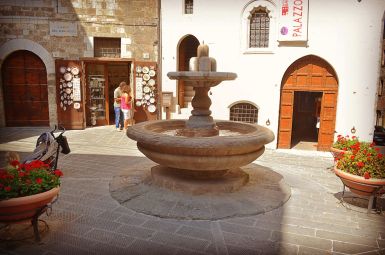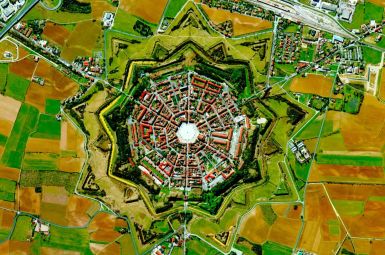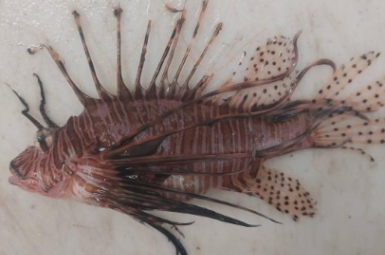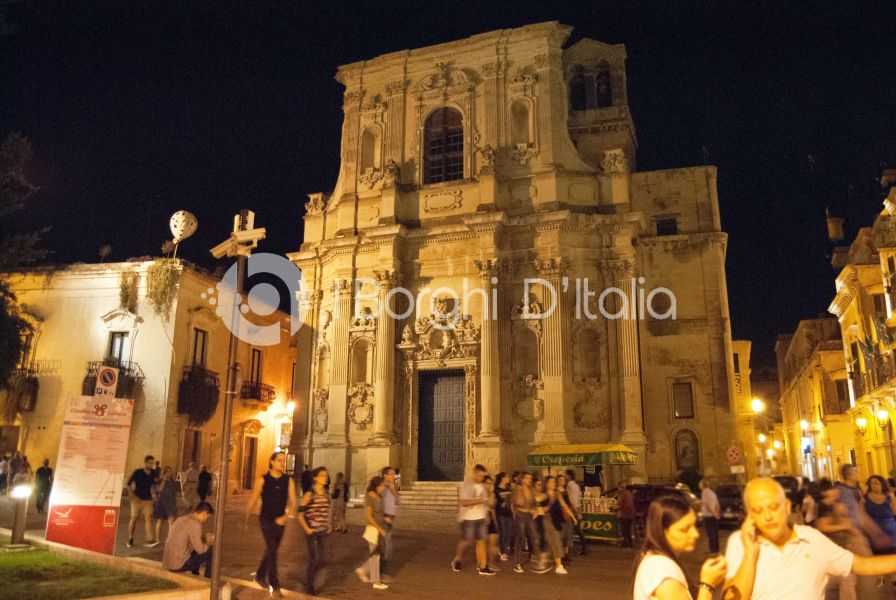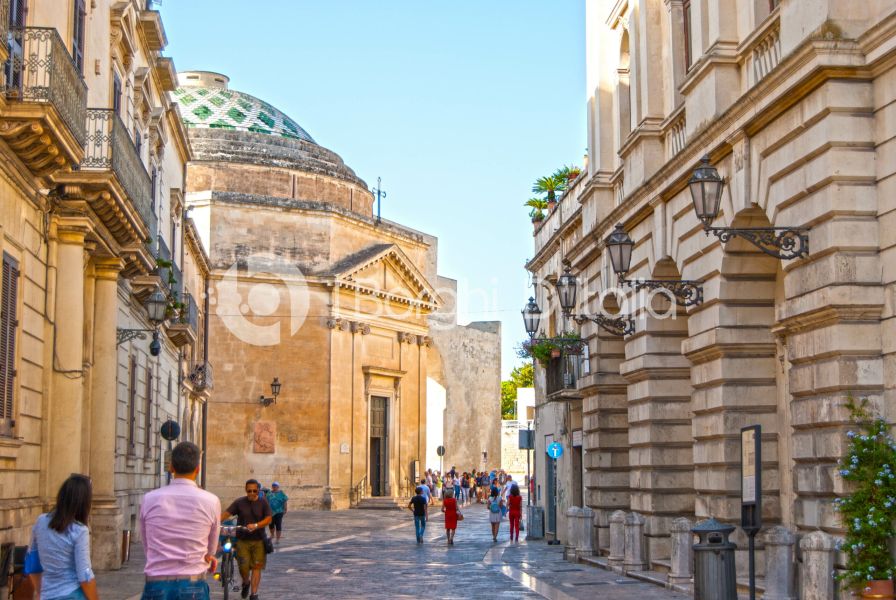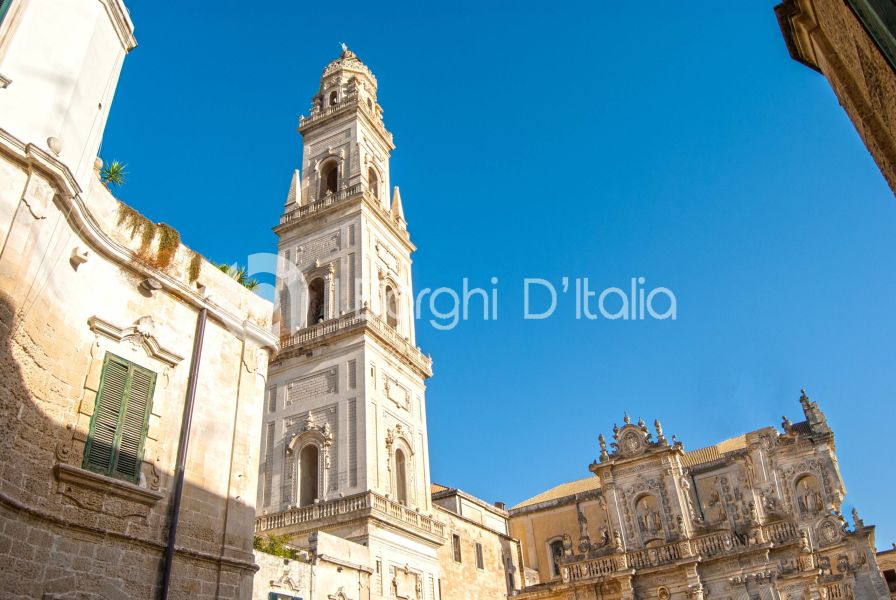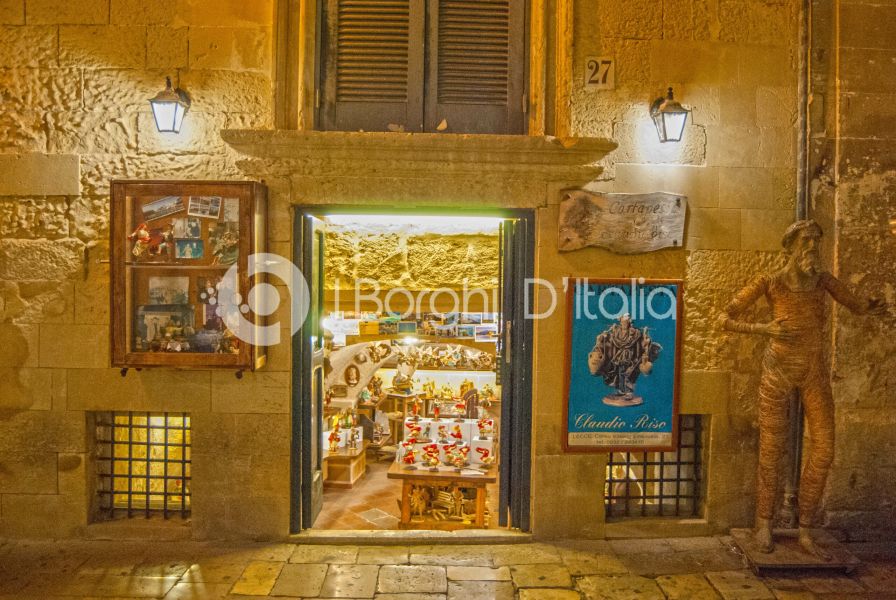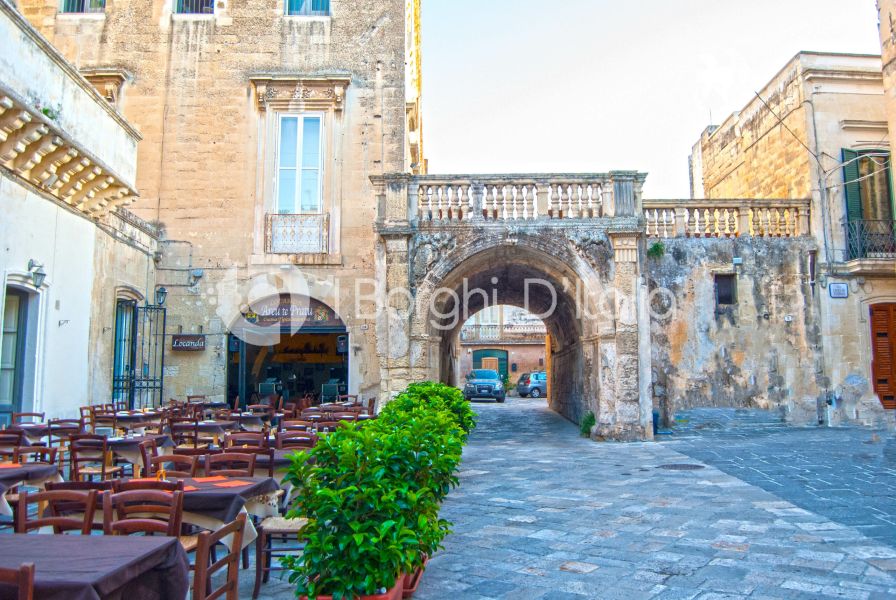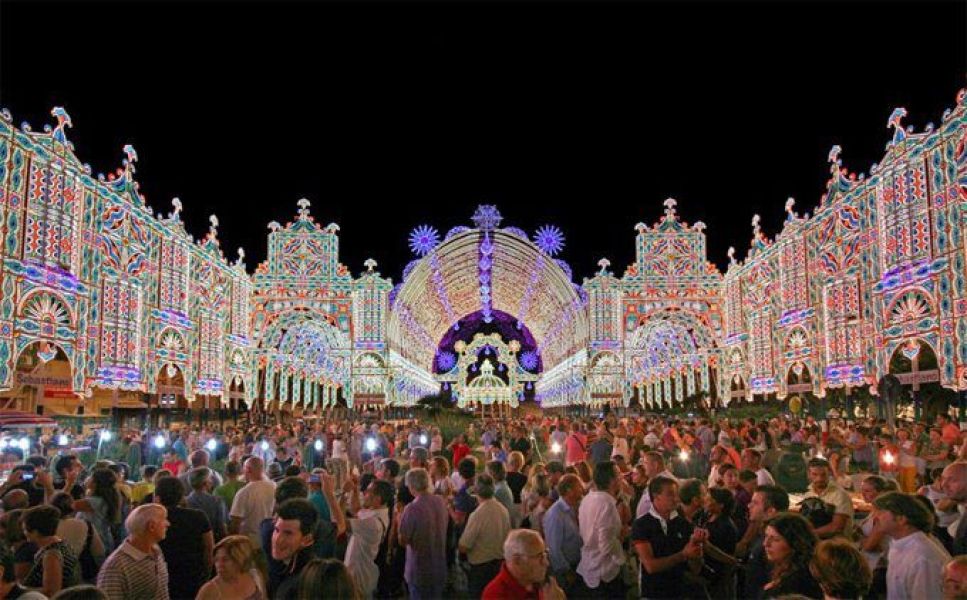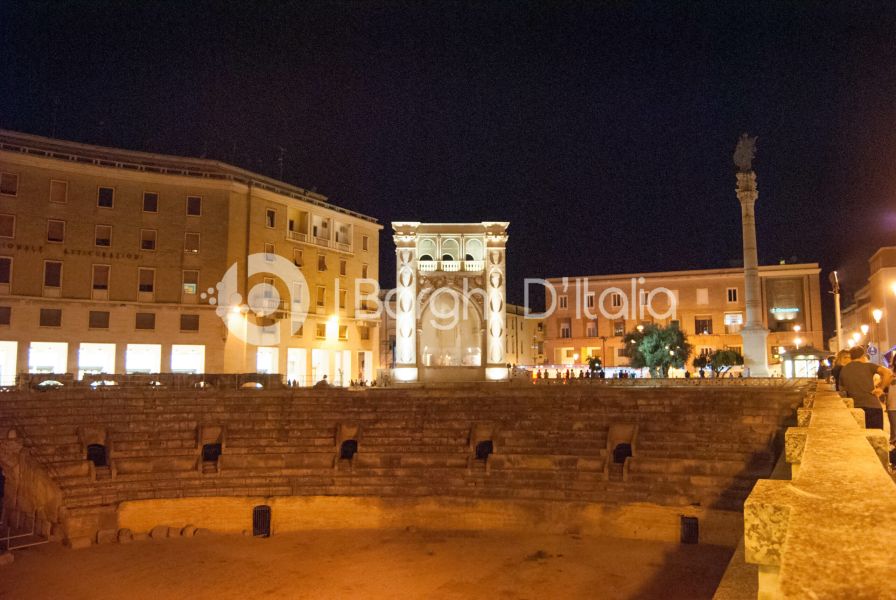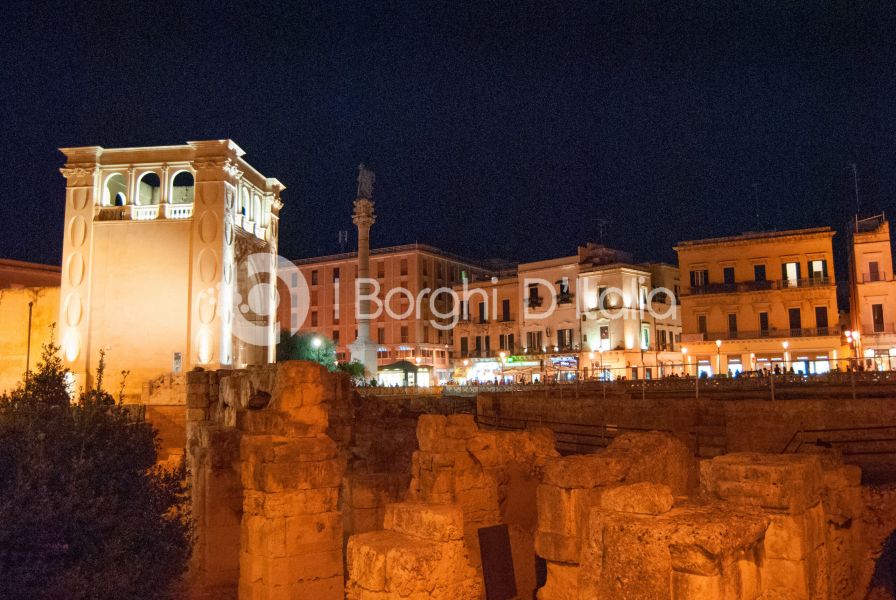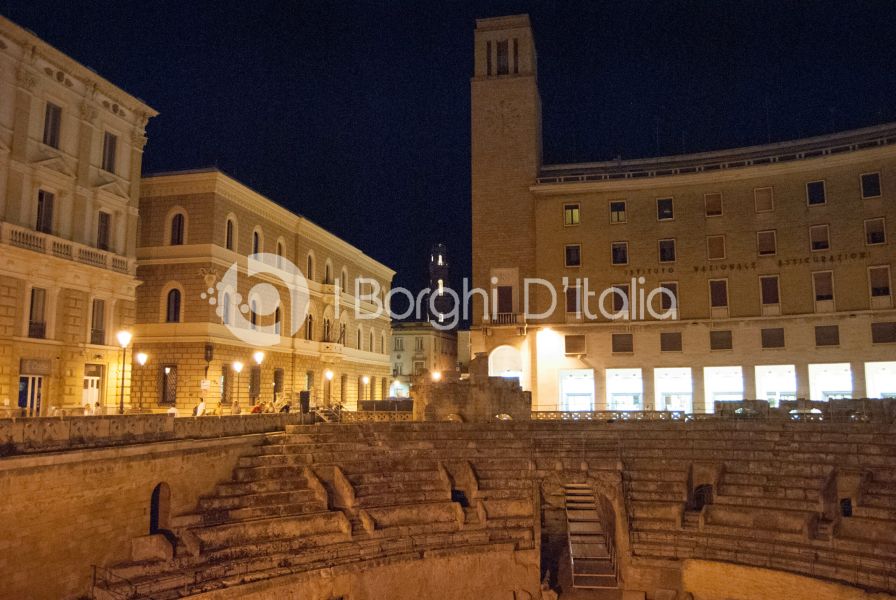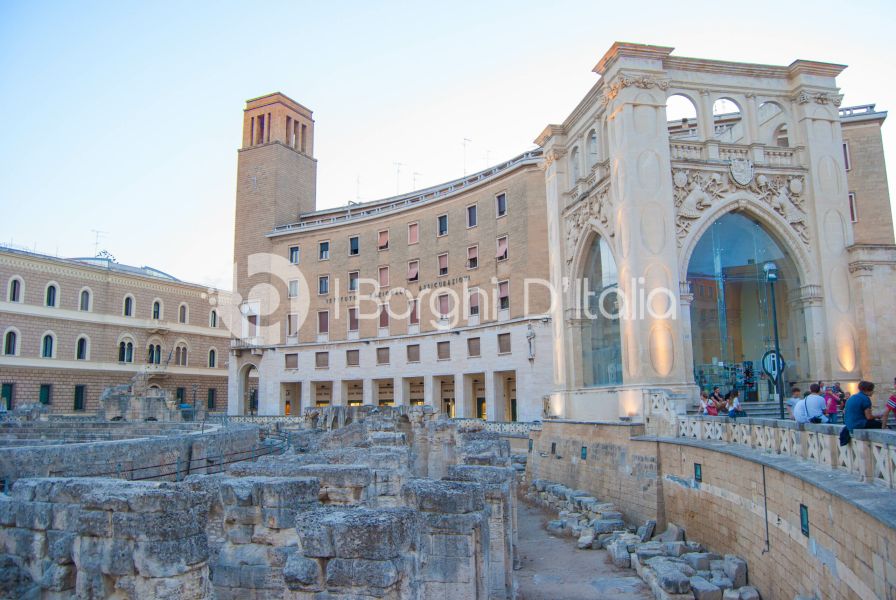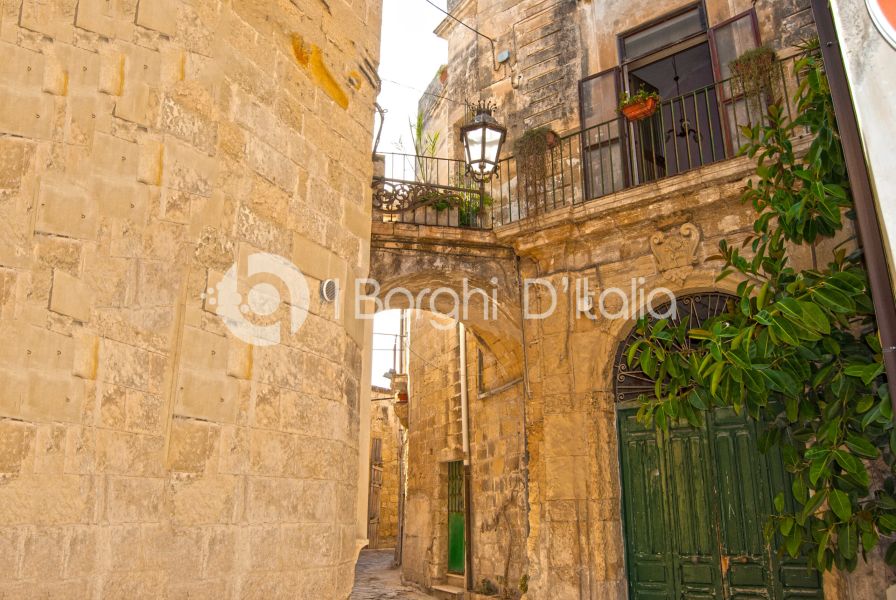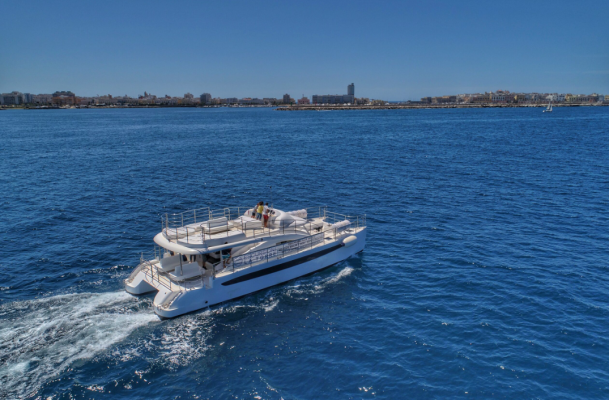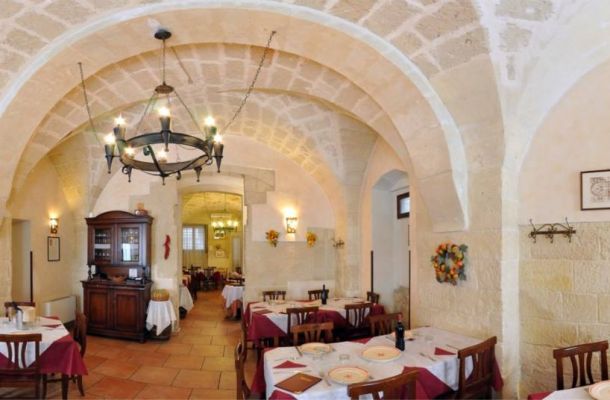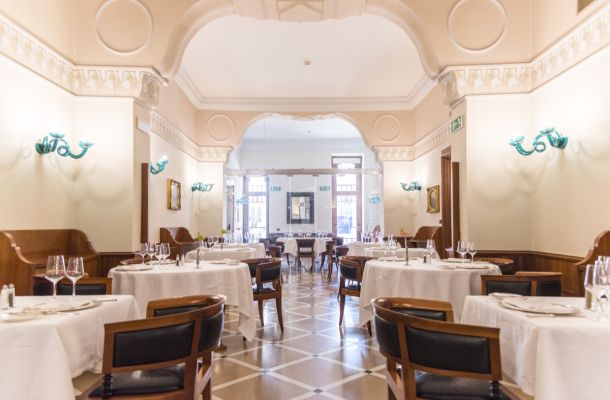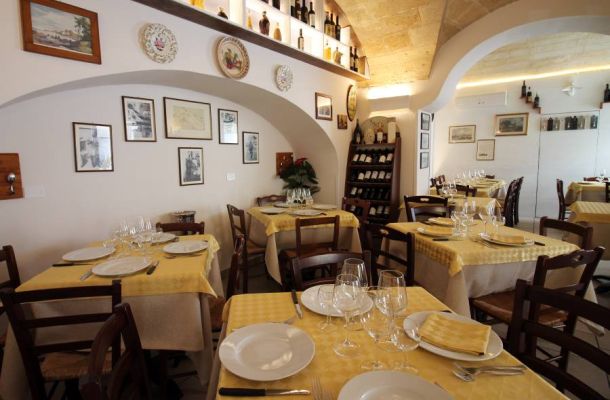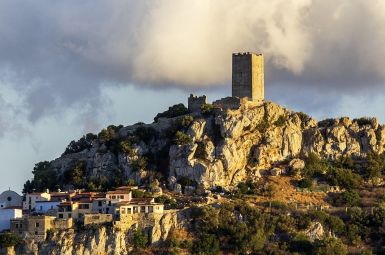
Il Borgo di Lecce
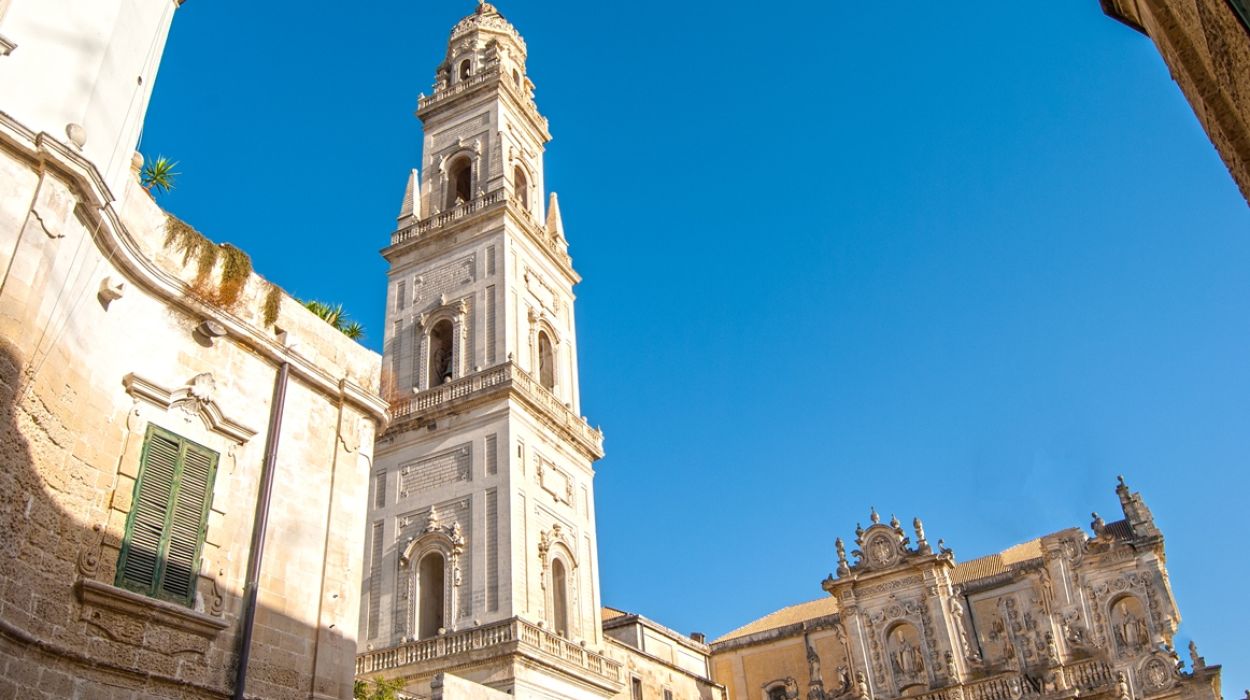
Il Borgo d’Italia
tutto da scoprire ed esplorare
Monumenti
La storia
La fondazione di Lecce si perde tra i misteri del tempo e s’intreccia ad un’antica leggenda che racconta della sua esistenza già prima della guerra di Troia, circa 1200 anni prima della nascita di Cristo.
Le prime tracce d’insediamento umano risalgono all’età del ferro, ma è con la venuta dei Messapi che Lecce assume la forma di una città-stato e prende il nome di Lupiae.
Risale al periodo Messapico il profondo legame tra Lupiae e Rudiae, una città vicina che ha dato i natali al poeta latino Quinto Ennio.
La conquista del territorio da parte del popolo romano, porta a Lupiae il benessere economico e l’inizio di un espansione edile che sarà il suo punto di forza negli anni a venire. Nel periodo che va tra il I e il II secolo a.C. vengono costruiti l’anfiteatro e il teatro romano e la città viene collegata al porto di San Cataldo attraverso un sistema viario, grazie al quale riesce ad incrementare i commerci marittimi.
La potenza di Lecce subisce un declino nel medioevo, perché la città, divenuta contea, passa nelle mani di diverse casate e conosce la barbarie delle scorribande saracene da cui proverà a difendersi solo con l’arrivo degli angioini. Carlo V, infatti, irrobustisce la cinta muraria costruita durante il periodo Messapico e costruisce il Castello- fortezza che porta il suo nome ma soprattutto porta a Lecce una rivoluzione artistica che s’identifica sotto il nome di “Rinascimento Salentino”. In questo modo da’ l’avvio ad un fermento culturale che si rafforzerà durante la dominazione spagnola e accompagnerà la crescita della città fino ai nostri tempi.
Il 1600, periodo della riforma e della controriforma cattolica, è un punto importante nella storia leccese perché è questo il contesto in cui si diffonde il vento del Barocco, che porterà alla costruzione di chiese e palazzi nobiliari. Piazza del Duomo, Palazzo dei Celestini e la Basilica di Santa Croce sono solo alcuni dei simboli di Lecce, che con i loro decori barocchi stupiscono per opulenza ed eleganza.
La crescita di Lecce continua anche durante l’unità d’Italia e nell’epoca fascista, mantenendo comunque inalterato il fascino di una città raffinata e vivace, grazie anche all’Università che la porta ad essere centro di saperi d’eccellenza.
Porta Rudiae, Porta Napoli e Porta San Biagio
Non è difficile immaginare Lecce nel passato come una città florida e gioviale che viveva protetta all’interno della sua cinta muraria. Le mura racchiudevano un’area di cinquanta ettari a cui si poteva accedere attraverso le numerose porte disseminate lungo il perimetro. Oggi di questa struttura difensiva resta ben poco: rimangono le tre porte d’accesso che segnano l’ingresso del centro storico e una porzione di mura che coincideva con l’ingresso nord del borgo e che grazie ad un recente restauro sono tornate ad un rinnovato splendore.
Delle tre porte che ancora oggi sono in piedi la più antica è Porta Rudiae che si affaccia su Viale dell’Università ed è uno storico punto di riferimento per i cittadini.
Porta Rudiae sorge sui resti di una porta medievale, è stata eretta nel 1703, in un periodo storico in cui non c’era più necessità di difendersi da minacce esterne e per questo motivo è stato possibile concentrarsi maggiormente sul lato estetico, arricchendo il portale di decorazioni barocche. La porta è dedicata a Sant’Oronzo, che troviamo in cima alla costruzione, accanto alla statua del Santo si trovano Sant’Irene e San Sebastiano, patroni minori della città. I busti posti ai lati sono riferimenti a figure importanti della storia messapica: è raffigurata la regina Equippa, suo marito Idomene, il fratello Dauno ed infine Melennio, suo padre, a cui è stata attribuita la fondazione della città. Al suo nome è legata anche la strada sotterranea che, secondo la leggenda, dalla porta conduce all’antica Rudiae
Poco lontano da Porta Rudiae, si trova Porta Napoli che conduce verso i vicoli lastricati del centro storico e intreccia la sua storia con le incursioni turche e con la presenza angioina in città. In molti vedono in questa porta un arco di trionfo in stile romano, per via della costruzione tipica di queste strutture e della presenza di stemmi militari scolpiti nella facciata ma è un’ipotesi che ancora oggi resta sospesa.
Alcuni scavi effettuati nei dintorni della porta hanno portato alla luce numerose tombe di origine messapica e con molta probabilità ce ne sono ancora molte altre interrate. La leggenda narra che nelle vicinanze di Porta Napoli si trovino anche i resti di San Giusto a cui era stata dedicata la porta che precedentemente si trovava nello stesso punto.
L’ultima porta è porta San Biagio, distante dalle altre due, chiude il centro storico alla fine di quella che per gli universitari è conosciuta come “la via dei pub”. Questa porta è stata ricostruita nel 1774, sulla facciata sono presenti colonne doriche e decorazioni in pietra leccese, con due stemmi civici e la statua di Sant’Oronzo. Nessun segno di San Biagio a cui per volere del committente è dedicata la porta. San Biagio era un vescovo armeno, martirizzato intorno al 316 per non aver voluto rinunciare alla fede cattolica. San Biagio è conosciuto come protettore della gola e il suo culto è venerato in numerose città italiane.
Obelisco
Non tutti conoscono la vera storia dell’obelisco di Lecce, che spesso viene fatto erroneamente risalire all’epoca romana, ma in realtà è molto più recente di quello che può sembrare. È stato realizzato nel 1822 da Vito Carluccio per commemorare le venuta in città del re Ferdinando I di Borbone.
L’Obelisco è una colonna in pianta quadrata, arricchita da basso rilievi scolpiti in pietra leccese su tutte le sue facce. Tra i tanti simboli emerge lo stemma della terra d’Otranto: un delfino che morde una mezza luna e che ricorda la dura lotta della popolazione locale contro i saraceni. Nelle incisioni presenti sulla colonna sono riportate alcune delle località più rinomate del Salento e la loro distanza da Lecce; la scritta più lunga è un sunto della visita del re delle Due Sicilie.
Piazza del Duomo
Dove via Libertini incontra la lastricata via Palmieri, si apre lo slargo di Piazza del Duomo: un tripudio di stile barocco. Questa piazza è stata pensata come un cortile ed in passato la sera veniva chiuso dietro a due imponenti porte. La piazza custodisce nel suo seno il Duomo di Lecce, il campanile, l’Episcopio e il Palazzo del Seminario.
Il Duomo è opera dell’architetto Giuseppe Zimbalo, una firma ricorrente quando si parla di Barocco Leccese. La cattedrale è stata edificata sui resti di templi più antichi, tra il 1659 e il 1670 l’edificio è stato distrutto perché non ritenuto in linea con i precetti imposti dal Concilio di Trento ed è stato ri-edificato nella veste che vediamo oggi.
La facciata che affascina i visitatori entrando nella piazza in realtà è la facciata laterale della Cattedrale, abbellita dalle statue di San Giusto e San Fortunato e da due colonne che delimitano il portale e sorreggono una balaustra sormontata dalla statua di Sant’Oronzo. Ancora più in alto lo stemma di Mons. Luigi Pappacoda, committente della chiesa. È stato lo stesso vescovo a scegliere le quattro statue che abbelliscono la facciata principale, molto più sobria del prospetto laterale e arricchita da un monumentale portale in bronzo, costruito nel 2000 dall’artista Armando Marrocco, per ricordare il Giubileo di quell’anno. L’interno è ricco di decorazioni color oro che donano una luce mistica alle navate, trionfano gli altari barocchi sormontati da un cielo ligneo che percorre tutta la navata centrale.
Il campanile è esterno alla chiesa e si trova alla sua sinistra, ed anche questo è opera dell’architetto Zimbalo. Alla destra della Cattedrale si trova invece l’Episcopio, caratterizzato da un colonnato che gli conferisce semplicità ed imponenza al tempo stesso. L’episcopio è stato concepito come una dimora lussuosa, perché doveva rappresentare il simbolo del potere temporale della chiesa.
Chiude la piazza, il Palazzo del Seminario ideato dall’architetto Giuseppe Cino che seguì le linee guida dell’architetto Zimbalo. Il palazzo ha una facciata unitaria, intervallata da lesene e finestre con al centro un balcone. Nonostante sia caratterizzato da una bellezza austera, è arricchito con piccoli vezzi barocchi nel portale e sotto le balaustre. Da vedere è il chiostro interno, abbellito dai tocchi leggeri del verde del prato e dagli arbusti che circondano un pozzo in stile barocco, detto Vera Ovale, sormontato dalla statua di Sant’Irene.
Il Palazzo del seminario dal 2004 è la sede del Museo Diocesano d’Arte Sacra, attraverso i reperti custoditi tra le sue mura si racconta la storia religiosa ed artistica di Lecce e della sua provincia.
Piazza Sant’Oronzo
Piazza Sant’Oronzo è la piazza più famosa della città, a cui tutti arrivano percorrendo vicoli e viuzze e da cui tutti partono alla ricerca di negozi, ristoranti o monumenti. È il fulcro della storia di Lecce e della sua cultura, ricca di simboli e luoghi importanti. Sant’Oronzo si trova al centro della piazza, su di una colonna con capitello che ancora oggi è contesa tra Lecce e Brindisi. La tradizione popolare racconta infatti che la colonna e il suo capitello siano stati costruiti dai brindisini, partendo da una delle due colonne che chiudevano la via Appia in prossimità della loro città. Le colonne erano state attribuite ad Ercole e proprio al mitico eroe venne dedicata la nuova opera rimaneggiata. Il Vicere però non gradì il gesto che giudicò poco consono, ed ordinò che la colonna e il capitello venissero trasferiti a Lecce, inoltre fece affiggere una targa in cui si lascia intendere che Brindisi abbia donato la struttura ai leccesi. Così però non è mai stato e da ciò è nata una goliardica rivalità tra le due città che si protratta fino ai giorni nostri.
Sant’Oronzo è diventato patrono di Lecce dopo aver salvato la città dalla peste; la statua, che oggi si trova nella piazza a lui dedicata, è del XVIII secolo e ha sostituito quella più antica che è stata distrutta dallo scoppio ravvicinato di un fuoco d’artificio. La statua è stata realizzata da un maestro veneziano ed è in legno, rivestita in rame. La credenza popolare dice che le tre dita aperte del santo indicano i ‘giusti’, inteso come stupidi, cioè i monaci, i preti e coloro che non fanno figli, altri sostengono che faccia riferimento ai tre patroni della città: Sant’Oronzo, San Giusto e San Fortunato. Sicuramente e molto più semplicemente il santo è stato raffigurato nell’atto di benedire la città.
La presenza dei veneziani a Lecce si evince anche dalla chiesetta di San Marco e dal simbolo della città veneta che si trova sulla sua facciata. Oggi la chiesa è la sede dell’associazione reduci di guerra. Accanto a questo piccolo edificio si trova il Palazzo del Sedile che un tempo era la sede della municipalità. Sulle sue scale oggi ci si ferma per cercare ristoro, scambiare quattro chiacchiere o gustare un gelato ma un tempo dalle stesse sedute si assisteva alle torture dei condannati. Dove veniva posizionata la ruota medievale oggi si trova il mosaico della Lupa, simbolo di Lecce. Gli studenti più superstiziosi evitano di calpestarlo perché si racconta che possa causare contrattempi e portare ad un ritardo nel conseguimento della laurea.
Alle spalle della piazza si trova l’anfiteatro romano.
Anfiteatro romano.
Un misto di timore e curiosità deve aver animato le maestranze che lavorarono alle fondamenta della filiale della Banca d’Italia. Siamo sul finire del milleottocento, l’andamento circolare degli edifici che si trovano alle spalle di Piazza Sant’Oronzo lasciava intuire che ci fosse interrata una cavità, ma nessuno mai aveva osato andare oltre queste supposizioni. Iniziano per curiosità e quasi come una scommessa i lavori che con grande stupore portarono alla luce dell’anfiteatro romano. È stata soprattutto la rivincita di architetti e maestri costruttori contro chi li aveva sbeffeggiati e contro i giornali locali che facevano ridere la città con la loro satira pungente.
L’anfiteatro che oggi vediamo è solo una parte dell’originale, la restante parte resterà per sempre interrato sotto la chiesa delle Grazie e le antiche botteghe artigiane.
Un’incisione sulle pareti porta il nome di Traiano e questo ha fatto datare la costruzione dell’anfiteatro all’epoca imperiale, compresa tra il I e il II secolo a.C, ma con molta probabilità è anche più antico. Nella sua interezza dev’essere talmente grande da ospitare diverse migliaia di persone e questo è senz’altro una testimonianza di quanto era importante Lecce in epoca romana.
Sulle pareti si possono ancora vedere le raffigurazioni di animali come orsi, cervi, leoni e tori, che venivano cacciati all’interno nell’arena. La caccia agli animali esotici era uno degli spettacoli che si potevano vedere nell’anfiteatro, si faceva la mattina mentre a mezzogiorno c’erano le esecuzioni capitali o le lotte tra condannati a morte e nel pomeriggio si concludeva con le lotte tra gladiatori. Oggi l’anfiteatro romano ha abbandonato queste vesti cruente e soprattutto in estate viene scelto per la rappresentazione di spettacoli teatrali e piccoli concerti classici, mentre in inverno per anni è stato lo scenario del tradizionale presepe natalizio.
Palazzo Sozi Carafa
Un po’ discostato rispetto all’andamento di Piazza Sant’Oronzo, Palazzo Carafa s’incontra arrivando da via Libertini.
Il committente di questo palazzo è il vescovo Alfonso Sozi Carafa. È stato edificato nel 1542 per ospitare le suore Paolotte, successivamente è stato fatto demolire dalle stesse e ricostruito per volontà del vescovo. Quando venne costruito però il Barocco era ormai uno stile sorpassato e l’architetto che l’ha ideato ha ceduto al fascino del Rococò, che si ritrova nell’andamento morbido delle cornici. Palazzo Carafa ha uno stile alternato di lesene e campate, con finestre. Compare sulla facciata lo stemma della famiglia Carafa.
Nel periodo post unitario il comune ha acquistato il Palazzo, che ha perso così la sua funzione religiosa ed è diventato sede del Municipio.
Teatro Romano
Il teatro romano si trova nel cuore del centro storico, racchiuso tra i vicoli e nascosto dai palazzi seicenteschi. Era il 1929 e si stava scavando per le fondamenta di una casa quando con grande stupore s’incappò in qualcosa di duro, già scolpito nella roccia. Era la cavea, nome latino delle odierne gradinate, ed era anche l’inizio della scoperta di un teatro romano costruito durante l’impero di Augusto. Con gli scavi sono state rinvenute anche alcune statue di epoca successiva, che decoravano il teatro e che oggi sono custodite all’interno del museo Sigismondo Castromediano.
Solo una piccola parte del teatro è stata riportata alla luce ma si pensa che potesse contenere alcune migliaia di spettatori. Contrariamente all’anfiteatro, il teatro era il luogo della cultura: qui infatti venivano portate in scena commedie e tragedie
Teatri di Lecce
Via Trinchese congiunge Piazza Sant’Oronzo a Piazza Mazzini, oggi piazza Trecentomila. È la via dei negozi importanti e delle marche più rinomate ma è anche la strada in cui sorge maestoso il Teatro Apollo. Tra i teatri leccesi è il più giovane ma è anche quello che ha avuto una storia più travagliata. È stato costruito agli inizi del novecento per poter ospitare un maggior numero di spettatori: è un teatro imponente, con un colonnato che sorregge un architrave, in stile neoclassico. Nonostante il suo aspetto e nonostante la sua magnificenza, nel 1986 cala il tendone sul palcoscenico del suo ultimo spettacolo. Sono anni tristi, in cui il teatro cede alla brutalità del tempo e si lascia andare alla decadenza: fino a quando iniziano i lavori di ristrutturazione, che durano anni. Solo nel febbraio del 2017 il teatro viene restituito alla sua Lecce, vestito di nuove tonalità. Per l’inaugurazione in pompa magna arrivano nella città barocca il Presidente della Repubblica Sergio Mattarella e il ministro dei Beni Culturali Dario Franceschini.
Il più antico tra i tre teatri leccesi è il Teatro Paesiello, una bomboniera seicentesca realizzata con un’impronta di stile napoletano. Purtroppo la bellezza non basta sempre a tutto, infatti nel milleottocento gli spettatori iniziano a soffrire le dimensioni ridotte di questo teatro che lo rendono inadatto solo a spettacoli in prosa. Raccogliendo l’insoddisfazione popolare, Donato Greco decide di costruire un teatro più ampio che possa ospitare anche opere sinfoniche e di un certo rilievo. Con queste finalità viene edificato il Teatro Politeama Greco che ancora oggi appartiene alla famiglia e dal giorno della sua inaugurazione, nel 1884, vanta ogni anno cartelloni con opere di grande prestigio, che spaziano dalla prosa alla lirica. Questo teatro negli anni è stato guidato dalla direzione artistica di nomi importanti tra cui si annoverano Katia Ricciarelli e il tenore Tito Schipa.
Castello Carlo V
Carlo V per far fronte alle incursioni saracene rinvigorisce l’assetto difensivo di Lecce, che era costituito per lo più da una cinta muraria e, nello stesso punto in cui si trovava una torre di origine normanna, costruisce un castello fortezza che ancora oggi porta il suo nome.
Il Castello non ha vezzi decorativi e ha un assetto architettonico tipicamente militare. Al piano inferiore si trova un portale che conduce alla sala grande del corpo centrale, ricca di colonne e capitelli in stile dorico e che porta anche nel giardino. Il piano superiore è caratterizzato da ampi atri illuminati da vetrate, il salone è stato restaurato di recente.
L’assetto spartano del castello rimane oggi solo sul piano estetico, nel corso degli anni le sue stanze hanno ospitato importanti eventi culturali e artistici.
Basilica di Santa Croce
Addentrandosi verso via dei templari si giunge al quartiere della Giudecca. Alcune tracce di quello che è stato il centro della vita ebraica di Lecce sono nascoste dentro le mura di Palazzo Personè, ma anche per le stradine retrostanti. Gli ebrei nel corso degli anni riuscirono ad acquistare una posizione sociale privilegiata e per questo iniziarono ad essere mal visti dalla popolazione, che trovando appoggio nel potere regio, prima li ghettizzò e poi li cacciò via dalla città. Rientra in questo contesto l’esproprio dei suoli alle famiglie ebraiche per la costruzione della Basilica di Santa Croce. Questa chiesa con la sua facciata è diventato il simbolo più famoso del Barocco Leccese e passandole davanti non è inusuale trovare persone che con il naso all’insù cercano tra le decorazioni del prospetto, i volti stilizzati dei quattro committenti.
La prima pietra per la costruzione della Basilica viene posta nel 1353 per volere del conte di Lecce Gualtieri VI de Brienne, tuttavia i lavori si sono interrotti bruscamente alla sua morte e sono ripresi solo nel 1549 grazie all’insistenza delle maestranze locali. Proprio queste però hanno ricevuto molte critiche e pochi consensi una volta terminata la facciata, perché il popolo giudicò poco consona la commistione di simboli pagani e cristiani. Nonostante questo la melograna, simbolo di fertilità ,convive pacificamente da secoli accanto agli angeli, così come pellicani e fiamme vivono benissimo vicino a statue di papi e santi, in un connubio di simboli che hanno portato al successo della chiesa nel tempo.
Il rosone centrale, decorato da cerchi e foglie d’acanto, cattura lo sguardo di chi osserva e lo distoglie dalle altre sfumature della facciata, come le statue di Celestino V e San Benedetto e le due figure femminili che simboleggiano la Fede e la Carità. Una balaustra divide in due parti il prospetto ed è sorretta da uomini e belve, si pensa che i primi rappresentino i prigionieri turchi catturati dai veneziani durante la battaglia di Lepanto, mentre i secondi simboleggino gli alleati cristiani.
L’interno è molto più semplice e spoglio rispetto alla facciata. La navata centrale è coperta da un soffitto a cassettoni in legno di noce e il perimetro a croce latina è arricchito da dodici altari barocchi. L’altare maggiore è incorniciato da un portale ed in alto si trova lo stemma della famiglia Adorni che tra queste mura ha seppellito molti dei suoi componenti.
Ex convento dei Celestini
Il manierismo Barocco della Basilica di Santa Croce prosegue in linea continua verso quello che era il Convento dei Celestini. Il palazzo è stato per secoli uno dei più importanti centri del Sapere, grazie al lavoro dei monaci amanuensi che tra queste mura hanno realizzato miniature e codici opere di grande importenza, oggi custodite nel museo Sigismondo Castromediano.
L’attività dei monaci è proseguita ininterrottamente fino al 1807, quando tutti gli ordini monastici sono stati allontanati dalla città. Spogliato delle sue funzioni originali, il palazzo è diventato sede delle istituzioni della Terra d’Otranto e successivamente della Provincia di Lecce.
Piazza Sigismondo Castromediano
Incuneata tra Piazza Sant’Oronzo e la Basilica di Santa Croce si trova la piazzetta Castromediano, un luogo di passaggio che in pochi si soffermano ad osservare. Questa piccola piazza è il simbolo della grandezza di Lecce in epoca romana. Com’è accaduto per l’anfiteatro e per il teatro romano, anche in questo luogo sono stati effettuati scavi di riassetto urbano che hanno portato alla scoperta di importanti reperti dell’età del ferro e di un trappeto ipogeo, che risale al I secolo a.C.
Il territorio salentino è ricco di ipogei e cisterne olearie. Queste strutture raccontano di un epoca in cui la produzione e il commercio di olio lampante era il vero motore trainante dell’economia. Gli ipogei venivano scavati nella roccia friabile ed erano per questo poco costosi, inoltre le temperature di questi frantoi erano ideali per la spremitura delle olive.
Chiesa del Rosario o di San Giovanni
L’ultima opera firmata dall’architetto Zimbalo è la chiesa del Rosario o di San Giovanni Battista. Ci si imbatte nella sua facciata appena varcata Porta Rudiae e il suo barocco stupisce ed affascina fin dal primo impatto.
Il prospetto è diviso in due parti da una balaustra, nella parte superiore si trovano trofei traboccanti di fiori e di frutti e alcune statue che simboleggiano le visioni del profeta Ezechiele. Nella parte inferiore si trova il portale racchiuso in due colonne, sormontato dallo stemma dei domenicani e dalla statua di San Domenico di Guzman. Al lato si trovano invece due nicchie con due statue, sono quelle di San Giovanni Battista e del beato Francesco dell’ordine dei predicatori.
Se la facciata è barocca, l’interno lo è ancora di più e si ritrova con chiarezza l’intento di abbagliare e meravigliare il fedele, come chiedevano i precetti della controriforma cattolica. L’impianto della chiesa è a croce greca, ed è circondato da numerosi altari ed ovunque si trovano statue di Santi scolpite in pietra leccese. È molto importante il pulpito cesellato con le scene dell’apocalisse, è l’unico a Lecce ad essere scolpito in pietra. Il progetto della chiesa prevedeva anche una cupola che non è mai stata completata, perché in corso d’opera è venuto a mancare l’architetto Giuseppe Zimbalo che proprio nella chiesa del Rosario ha chiesto di essere seppellito e qui ancora oggi riposa.
Ex Conservatorio di Sant’Anna
Via Libertini è ricca d’importanti edifici storici che portano verso l’essenza del barocco leccese. Tra i ristorantini e i negozietti, in questa strada, si trovano tra gli altri anche l’Accademia della Belle Arti, la Chiesa del Rosario e poi l’Ex Conservatorio di Sant’Anna. Quest’ ultima istituzione è stata voluta dalla nobildonna Teresa Paladini che voleva donare alla città un luogo di ritiro adatto alle ragazze dell’alta borghesia che avessero una vocazione religiosa e fossero votate alla vita quasi monacale. È stato istituito nel XVII secolo, ed è opera dell’architetto Giuseppe Zimbalo. Nel 1679 il conservatorio di Sant’Anna si trasferisce a Palazzo Verardi, dove si trova tutt’ora. Alcuni anni dopo, per volere del vescovo Alfonso Sozi Carafa, il palazzo viene ampliato e la sua facciata viene ingentilita da un’elegante scalinata che conduce al portale d’accesso, incorniciato da raffinati motivi e sormontato dagli stemmi delle famiglie Paladini e Verardi.
Pochi sanno che costeggiando la stradina accanto alla chiesa del Rosario si giunge ad ammirare il giardino dell’Ex Conservatorio, dove c’è un Ficus plurisecolare che con la sua folta chioma abbraccia l’intera facciata dell’edificio.
Oggi il conservatorio Sant’Anna continua ad essere un centro di cultura e d’arte e ospita spesso mostre ed eventi importanti.
Cimitero Monumentale di Lecce e Chiesa di San Niccolò e Cataldo
“ a memoria delle umane genti” dice così l’incisione che si legge sull’architrave dell’ingresso del cimitero monumentale di Lecce. Un portale in stile neoclassico porta verso il lungo viale dei cipressi e conduce in un luogo che invita alla meditazione e al silenzio. Attraversando una piccola porta si accede al “giardino funebre” con la sua rete di viali e stradine, in cui le tombe antiche appaiono addossate le une alle altre dando un senso contrastante di disordine e perfezione. In mezzo agli oleandri e gli eucalipti si trovano tombe in stile neogotico, vetrate policrome, ma anche guglie e rosoni sapientemente scolpiti nella pietra leccese. Tra i nomi importanti che riposano nel cimitero monumentale di Lecce emergono quello del tenore Tito Schipa e del poeta Vittorio Bodini.
Accanto alla porta che conduce verso il giardino funebre si trova la chiesa di San Niccolò e Cataldo: una delle più belle e delle più antiche di Lecce. La chiesa risale al 1180, per volere di Tancredi conte di Lecce, successivamente è stata rimaneggiata in chiave barocca. La facciata è un misto di gusto medievale, che si ritrova nel portale e nel rosone, alternato allo stile barocco delle statue e delle decorazioni. L’interno è sobrio e raffinato ed è ricco di dipinti in tinte pastello. Si trovano affreschi pittorici tardo gotici che raccontano la vita di San Nicola e altri dipinti raffiguranti santi come San Benedetto e Santa Francesca Romana. Le acquasantiere figurate e la statua di San Nicola sono opera di Gabriele Riccardi, a cui venne affidata anche la realizzazione del primo chiostro del convento, che si trova all’esterno della chiesa. Solo in seguito è stato realizzato il secondo chiostro, al centro del quale si trova una fontana rinascimentale con colonne tortili che sorreggono un’edicola. Il Convento adiacente ha ospitato prima l’ordine dei Benedettini e successivamente quello degli Olivetani. Da alcuni anni è sede del dipartimento di Beni Culturali dell’Università del Salento.
La costruzione della chiesa di San Niccolò e Cataldo è stata voluta da Tancredi d’Altavilla, che mentre attraversava il Canale d’Otranto si trovò nel mezzo di una tempesta. Non sapendo cosa fare, ha rivolto le sue preghiere al cielo e poco dopo è riuscito ad approdare al porto di San Cataldo.
Chiesa di Sant’Irene
La facciata della chiesa dedicata a Sant’Irene è sormontata dalla scritta in latino “Irene virgini et martiri”. La maestosità dell’edificio racconta molto sulla grande devozione che i leccesi avevano nei confronti della santa, patrona della città fino al 1656.
La statua di Sant’Irene si trova in cima alla facciata e poco più in basso si trova lo stemma civico. Il prospetto ha delle nicchie vuote poste ai lati ed è diviso in due differenti stili artistici.
L’interno è molto più sobrio rispetto all’esterno ed è caratterizzato da tre cappelle per lato, comunicanti tra loro e illuminate dalla luce del giorno. L’altare centrale è stato rimaneggiato nella seconda metà del millesettecento ed in alto è stata affissa la preziosa tela de “Il trasporto dell’Arca” opera di grande maestria dell’artista Oronzo Tiso. A lato si trova uno degli altari più maestosi di Lecce, quello dedicato a San Gaetano, decorato da una tela centrale che raffigura il fondatore dell’ordine dei Teatini.
Tra gli altari e le pareti della sagrestia sono innumerevoli le opere di prestigio custodite in questa chiesa.
Museo Sigismondo Castromediano
Sigismondo Castromediano è stato un nobile patriota che ha vissuto a pieno il risorgimento italiano. Da giovane ha aderito alla “Giovine Italia” di Giuseppe Mazzini e questo lo ha portato ad essere accusato di “cospirazione contro la monarchia borbonica”, ad essere imprigionato e successivamente condannato all’esilio.
Rientrato in Italia è stato eletto nel primo parlamento italiano, alla camera dei deputati. Terminata la legislatura è rientrato nella sua terra natia e si è messo a servizio del popolo diventando consigliere provinciale. Ha dedicato gli ultimi anni della sua vita alla sua città: Lecce, a cui ha donato alcuni volumi per la biblioteca provinciale e ha istituito il museo che porta il suo nome.
Oggi il museo Sigismondo Castromediano si trova nell’ex Collegio Argento, istituito dai padri gesuiti. Tra le sue mura è custodita una collezione importante di reperti storici che attraversano i millenni: dalla preistoria alla civiltà messapica, passando per la conquista romana e per l’epoca medievale. Tra le sue sezioni si trova una pinacoteca che contiene tele realizzate tra il 1400 e il 1700, una biblioteca ed infine un’area riservata alle mostre temporanee, in cui sono state esposte opere di artisti di rilievo del panorama salentino.
Curiosità
L’arte della Cartapesta
Nelle botteghe di Cartapesta si respira un’aria solenne e un po’ mistica, probabilmente sono le tante mani tese e per i volti sacri che si trovano nei laboratori. È comunque sempre una grande emozione essere davanti ad un’arte che ha fatto la storia di questa terra. Per le stradine di Lecce sono poche le botteghe di Cartapesta rimaste, si trovano per lo più lungo la via dei templari, con le vetrine ricche di souvenir e oggettini. La cartapesta un tempo era un’arte che abbracciava l’intera comunità, il processo creativo partiva dalla carta e coinvolgeva tutte le maestranze d’artigianato locale: dallo scultore al pittore, passando per il vasaio. Era un’arte nobile che ha combattuto una chiesa austera e diffidente: quest’ultima temeva che la carta utilizzata per realizzare le statue sacre avesse scritte e raffigurazioni poco consone al contesto religioso. Scardinando preconcetti e pregiudizi la Cartapesta è riuscita ad aprire gli usci delle dimore di Cristo, arricchendole di decori e ornamenti.
Fare il cartapestaio è un lavoro di passione e amore, perché è vero che i materiali usati sono poveri ma bisogna armarsi di tempo e pazienza per realizzare opere in cartapesta. Le statue nascono con un’anima di paglia e fil di ferro, che viene racchiusa in una calzamaglia e vestita con veri e propri abiti. Si usa carta proveniente dalla costiera amalfitana, ridotta a pezzetti per essere modellata con facilità e tenuta insieme da un collante di farina, acqua e solfato di rame detta “pannula”. Grazie a questo composto e all’utilizzo di un calco in gesso, il cartapestaio crea il negativo della statua. Una volta realizzata la struttura base, si passa al drappeggio con una carta simile al tessuto. Con ferri roventi si fa la focheggiatura, per modellare il drappeggio e limare le imperfezioni. Per fissare il tutto si utilizzano quattro strati di acqua, gesso e colla ed una volta asciugati si procede alla stesura dei colori grezzi che daranno l’impostazione per le tonalità definitive. Spesso sfuggono a questo complesso procedimento le mani e il viso che vengono realizzate in terracotta perché devono essere fedeli alla struttura anatomica umana, evitando così la deformazione che caratterizza la cartapesta.
La cartapesta è un’arte da mani sporche ma tremanti di felicità davanti a nuove creazioni. È un’arte povera come le sue materie prime, ma immensamente ricca di storia e di fascino.
Il Barocco Leccese
La vivacità artistica di Lecce trova la giusta collocazione nell’architettura e s’incastona perfettamente nel genere che viene conosciuto come ‘ Barocco Leccese’. Uno stile morbido ed elegante,che abbellisce portali e balconi di palazzi patrizi ma soprattutto arricchisce le chiese, impreziosendole con motivi floreali e frutti in abbondanza: ghirigori e ghirlande che si plasmano grazie alla friabilità della pietra leccese, la pietra gentile.
Il Barocco Leccese è diverso dal Barocco romano di Gian Lorenzo Bernini e Francesco Borromini e gode dell’influenza del “plateresco” spagnolo, caratterizzato dall’imitazione dei lavori di argenteria. Sotto questa spinta i rosoni e le cornici sembrano prender vita, in un tripudio di simboli cristiani. L’iconografia del Barocco di Lecce si esprime nella glorificazione delle opere della natura, come eterno ringraziamento alla madre terra, che viene vista come il grembo che dona i suoi frutti, assecondando il volere del Signore.
Le firme principali che si trovano alla base dei monumenti leccesi sono due, l’architetto Giuseppe Zimbalo e il vescovo Luigi Pappacoda: principale committente delle opere realizzate in questi anni. Non bisogna dimenticare infatti che il Barocco nasce soprattutto dall’esigenza di affermare il potere temporale della chiesa e del clero e pone l’accento sul potere economico e politico dei finanziatori.
Personaggi
Vittorio Bodini
Quello di Vittorio Bodini è un nome che ancora oggi echeggia nella letteratura del novecento; un nome che suona morbido e incisivo come la sua poesia, con i suoi versi fragili come foglie di tabacco essiccate al sole del Sud, il suo Sud, amato ed odiato.
Il 6 gennaio 1914 viene al mondo, a Bari, Vittorio Bodini. Dopo la morte del padre, insieme alla famiglia, si trasferirà a Lecce. Era un giovane assetato di cultura che si abbevera alla fonte del nonno, Pietro Marti, il primo a scovare la vera vocazione del nipote: La scrittura.
Per Vittorio Bodini, Lecce è una città chiusa, dalla mentalità ristretta che attraverso il Barocco cerca di colmare un suo grande vuoto: la mancanza di un’ anima.
È il cantore del Sud, un Sud nero da cui fuggirà e ritornerà di continuo ma che imparerà ad amare realmente solo in Spagna, quando conoscerà i versi di Garcia Lorca. Tardi, troppo tardi, riscoprirà in Lecce la sua città ma si spegnerà a Roma, nel 1970, lasciando un vuoto tremendo tra le righe e i versi delle carte poetiche italiane.
Oggi riposa nel cimitero monumentale di Lecce, sotto il peso dei suoi versi più famosi
“Tu non conosci il Sud, le case di calce
Da cui uscivamo al sole, come numeri
Dalla faccia di un dado”
Poche parole per esprimere un malessere profondo, la malasorte di chi per casualità nasce al Sud, la beffa di chi viene sorteggiato per vivere questa terra, come i numeri imprevedibili che vengono fuori al lancio dei dadi.
Con pubblicazioni postume e raccolte dei suoi scritti si cerca ancora oggi, invano, di colmare il buco nero che ha lasciato, ma al suo pensiero ancora sanguina la poesia del novecento.
Tito Schipa
Sul finire dell’Ottocento nasce a Lecce, Raffaello Attilio Amedeo Schipa, da tutti conosciuto come Tito “il piccolo”. È il quarto figlio di una famiglia modesta e già fin dalla tenera età vien fuori il suo talento che lo porterà ad essere ‘propheta in patria’ della sua Lecce.
Il vescovo Gennaro Trama, nel 1902, convince Tito ad intraprendere gli studi in seminario per poter avere una formazione completa, anche dal punto di vista della composizione musicale. Nonostante l’ambiente ristretto in cui vive, emerge ben presto la vera vocazione di Tito Schipa ed il suo amore passionale per le donne che lo porterà tante volte ad avere problemi. Per sfuggire agli amori adolescenziali ed avere maggiori occasioni di debutto, il suo maestro lo convince a trasferirsi a Milano. La prima volta che Tito Schipa calca un palcoscenico è nel 1909 a Vercelli, con la Traviata, ma il successo arriverà dopo, nel 1914, quando a Napoli porterà in scena la Tosca di Puccini.
La sua fama varca i confini nazionali e porta Tito in Spagna, in America Latina ma soprattutto negli Stati Uniti, dove resta per quindici anni come tenore a Chicago e poi a New York. In America, ancora una volta, riesce ad immischiarsi in una rete di malefatte e tormenti. Si sposa con un’attrice francese, ma la sua passione per le donne fà naufragare il matrimonio. Si lega ai gangster di Al Capone e sperpera tutte le cifre astronomiche guadagnate in quegli anni.
Il legame sentimentale con Caterina Boratto lo riavvicina all’Italia ma il suo appoggio al regime fascista mina la sua carriera. In questi anni gli vengono preclusi i palcoscenici inglesi e persino il teatro La Scala di Milano non lo accetta come tenore.
La sua rigenerazione è faticosa ma a metà degli anni quaranta, a cinquant’anni Tito Schipa riesce a conquistare tutti i teatri del mondo.
Nel 1956 viene chiamato a dirigere una scuola di musica a Budapest, varca la cortina e riesce a conquistare anche le simpatie del regime sovietico. Questo gli causa però nuove accuse e nuovi dolori perchè tacciato di filo comunismo e coinvolto in controversie economiche e faccende poco chiare organizzate da parte dei suoi collaboratori, Tito è nuovamente costretto a tornare in America dove verrà accolto con immutato affetto. Qui apre una scuola di musica, ma il diabete contratto negli anni quaranta, lo porta alla morte dopo cinquantasette anni di carriera, a settantasette anni, il 16 dicembre del 1965.
Ricette Tipiche
Caffè in ghiaccio con latte di Mandorla
In uno storico bar che fa angolo su Via Trinchese è nato il caffè in ghiaccio con latte di mandorla, una delle bevande più amate dai salentini. Al tempo di Antonio, capostipite di una famiglia di torrefattori, era il proprietario dell’unico bar ad avere il ghiaccio: un grosso blocco gelato che le famiglie leccesi chiedevano di picconare per poter conservare il cibo nelle borse di cuoio. Qui, in questo bar dove il tempo sembra essersi fermato, Antonio ha inventato il caffè in ghiaccio, con pezzi di ghiaccio tritato grossolanamente che non si sciolgono a contatto con la bevanda bollente. Solo alcuni anni dopo, a questo caffè è stato aggiunto il latte di mandorla.
Il caffè in ghiaccio con latte di mandorla è, in realtà, una bevanda antica, lontana nel tempo e nello spazio, che ha trovato a Lecce il fulcro della sua esistenza. L’estate in Salento è annunciata dal profumo del caffè tostato e dal tintinnio del cucchiaino che si fa spazio tra il ghiaccio e il bicchiere,. Il Caffè in ghiaccio con latte di mandorla è il sapore che da il là alla stagione preferita di questa terra, fatta di bagni al mare e sere a chiacchierare davanti agli usci delle case. Se il Salento è la vostra meta, appena arrivati in città fermatevi al primo bar e ordinate un caffè in ghiaccio con latte di mandorla: solo così possono iniziare davvero le vostre vacanze.
Il rustico
È facile immaginare il profumo del primo rustico appena sfornato, magari per gioco o forse per scommessa. Di sicuro è stato creato in uno dei caffè cittadini che ancora oggi sono il suo regno. Il rustico è l’emblema dello street food salentino, irresistibile e irrinunciabile per chi sta via troppo a lungo ma anche per chi questa terra la abita tutto l’anno.
Pochi ingredienti hanno fatto la fortuna del rustico, uno scrigno di pasta sfoglia che custodisce un cuore di besciamella, mozzarella filante, un filo di sugo al pomodoro e una spruzzatina di pepe nero. Non è un piatto della cucina povera ma certamente non può rientrare nel menù di un ristorante. Il rustico è compagno dei lavoratori che hanno saltato il pranzo, soddisfa l’acquolina di studenti affamati in corsa verso un esame, accarezza i pensieri stanchi di fine giornata, di chi non ha voglia di cucinare ma non rinuncia a mangiare prelibatezze. Il rustico racconta le storie della classe media e negli anni, inconsciamente, ne è diventato il simbolo.
Il Pizzo Leccese
Il vero pizzo si trova solo a Lecce città, impreziosisce le vetrine dei bar e segue i turisti di passaggio con il suo profumo. Il pizzo è una focaccia sfiziosa, informe, ricca di pomodoro, cipolla, zucchine e peperoni che s’impasta seguendo l’antica ricetta delle massaie. In realtà si può classificare come una variante della Puccia: un impasto di grano duro e acqua, condito con olive celline, tipiche del Salento e cotta al forno a legna. La puccia trova la sua piena realizzazione accompagnata dal pomodoro, con condita con tonno e rucola. Il pizzo e la puccia erano il pasto ideale per i contadini che uscivano la mattina presto e dovevano smezzare la giornata lavorativa. Nonostante sia diffusa in tutto il Salento, ha varianti diverse che ne rimarcano la zona di provenienza, per esempio nella Grecìa Salentina prende il nome di Scheblasti e nel basso salento di Cazzata. Dettagli piccoli per uno dei cibi a cui un salentino non sa rinunciare.
_________________________________
Conosci altre ricette tipiche di questo borgo? Contattaci!
